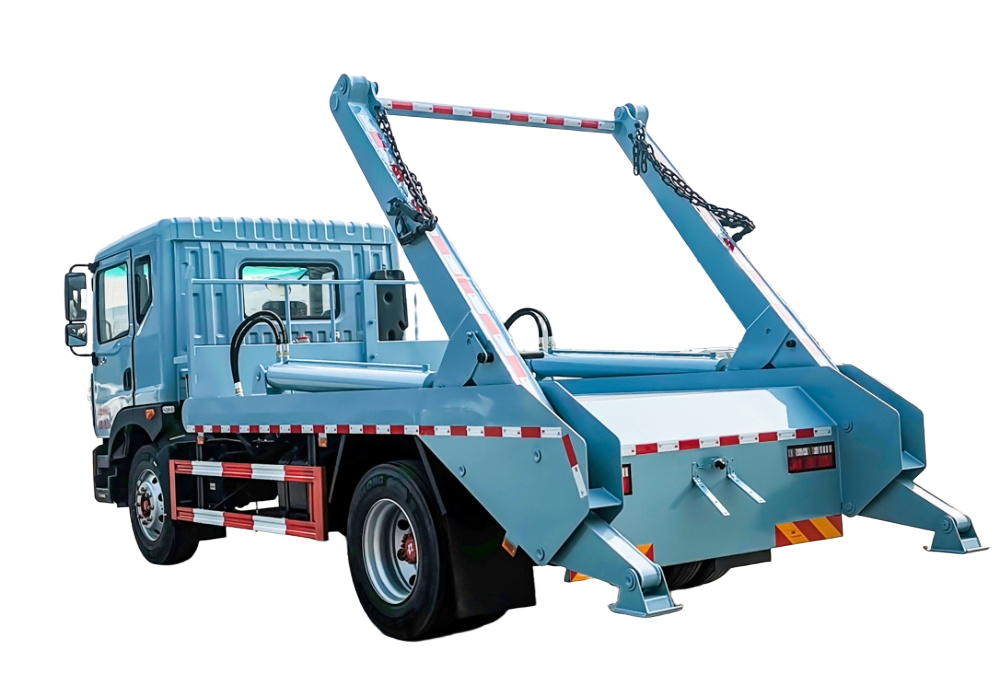Manual vs Automatic Transmission: How to Choose the Right Drivetrain for Special Vehicles
Manual versus automatic transmissions represent fundamental operational decisions for special vehicle fleets, yet selecting optimal drivetrain technology demands careful evaluation of 6 critical performance factors. This comprehensive comparison analyzes operator skill requirements (manual expertise vs automatic simplicity), fuel efficiency, maintenance complexity, initial cost, operational control, and service life expectations.
While both technologies enable specialized vehicle functions, manual transmissions excel in fuel economy and operator control precision, whereas automatic systems dominate in ease of operation and reduced training requirements. We examine decisive trade-offs—from fuel consumption (5-8% manual advantage) to maintenance intervals—using performance data from 12,000+ commercial vehicles across demanding applications.
Whether prioritizing manual transmission’s precise control or automatic’s operational simplicity, our drivetrain analysis equips you to select the ideal transmission solution. As China’s leading special vehicle manufacturer with extensive powertrain integration experience, Chengli Group provides uniquely qualified insights into transmission optimization for specialized applications.
Operational Control and Performance Characteristics
Transmission selection fundamentally impacts vehicle performance, operator efficiency, and mission effectiveness across diverse working conditions and operational scenarios.
Manual Transmission Control Advantages
Manual transmissions provide direct operator control over gear selection and engine braking, enabling precise vehicle management in challenging conditions with gear ratios optimized for specific tasks.
Precision Operation Benefits: Manual control enables optimal engine RPM management for PTO (Power Take-Off) operations, precise speed control during aerial platform positioning, and engine braking for steep descent control. Applications include:
- Fire truck pump operations requiring specific RPM ranges
- Aerial platform precise positioning and load management
- Waste collection vehicles navigating residential routes
- Construction vehicles requiring crawl speeds for precision work
Engine Braking Capability: Manual transmissions enable comprehensive engine braking through downshifting, reducing service brake wear and providing enhanced control on steep grades or during heavy load operations.
Automatic Transmission Operational Simplicity
Automatic transmissions eliminate clutch operation and gear selection complexity, enabling operators to focus on specialized equipment operation rather than drivetrain management.
Reduced Training Requirements: Automatic operation requires minimal specialized training, enabling rapid operator qualification and reducing training costs. Operational benefits include:
- Simplified operation reducing operator fatigue
- Consistent performance regardless of operator skill level
- Reduced training time and certification requirements
- Enhanced safety through simplified vehicle control
Adaptive Performance: Modern automatic transmissions include adaptive shift programming that optimizes gear selection based on load conditions, terrain, and driving patterns, providing optimal performance without operator intervention.
Fuel Economy and Efficiency Analysis
Manual Transmission Efficiency Advantages
Manual transmissions typically deliver 5-8% better fuel economy through direct mechanical connection and elimination of torque converter losses, with efficiency benefits increasing under city driving conditions.
Efficiency Factors:
- Direct mechanical drive eliminates torque converter slip losses
- Operator control enables optimal gear selection for conditions
- Lower parasitic losses through simplified hydraulic systems
- Reduced weight compared to automatic transmission systems
Automatic Transmission Convenience Benefits
Modern automatic transmissions incorporate advanced control systems that optimize shift points and torque converter lockup, narrowing the efficiency gap while providing operational advantages.
Efficiency Improvements:
- Electronic control modules optimize shift timing
- Torque converter lockup eliminates slip losses at cruise speeds
- Adaptive programming learns optimal shift patterns
- Advanced gear ratios provide wider efficiency range
Maintenance Requirements and Service Life
Manual Transmission Service Simplicity
Manual transmissions require minimal routine maintenance with primary service involving clutch adjustment and periodic gear oil changes every 100,000-150,000 miles.
Maintenance Advantages:
- Simple mechanical construction reduces failure points
- Clutch replacement represents primary maintenance requirement
- Gear oil changes required every 2-3 years typical service
- Field-repairable components enable local service capability
Service Life Expectations: Properly maintained manual transmissions achieve 300,000-500,000 mile service life with clutch replacement representing primary wear component requiring service every 150,000-250,000 miles.
Automatic Transmission Service Complexity
Automatic transmissions require regular fluid and filter changes with service intervals every 30,000-60,000 miles depending on operating conditions and manufacturer specifications.
Maintenance Requirements:
- Transmission fluid and filter changes every 30,000-60,000 miles
- Electronic control module diagnostics and calibration
- Torque converter service and inspection procedures
- Complex hydraulic system requiring specialized service tools
Service Life Factors: Modern automatic transmissions achieve 200,000-300,000 mile service life with proper maintenance, though severe duty applications may require earlier service intervention.
Initial Cost and Value Analysis
Manual Transmission Cost Advantages
Manual transmissions typically cost $3,000-$8,000 less than equivalent automatic systems, providing immediate cost savings and simplified vehicle pricing.
Cost Structure:
- Lower initial purchase price
- Reduced complexity decreases manufacturing costs
- Fewer electronic components reduce system complexity
- Simplified installation and integration requirements
Automatic Transmission Investment Justification
Automatic transmissions command premium pricing but deliver operational benefits that may justify additional investment through reduced training costs and improved operator productivity.
Value Proposition:
- Enhanced operator productivity through simplified operation
- Reduced training costs and faster operator qualification
- Improved safety through simplified vehicle control
- Potential insurance benefits through reduced accident risk
Cold Weather and Extreme Condition Performance
Manual Transmission Climate Resilience
Manual transmissions operate reliably across extreme temperature ranges with minimal cold weather starting issues and consistent performance in harsh conditions.
Cold Weather Advantages:
- Mechanical operation independent of fluid viscosity
- Immediate operation capability without warm-up requirements
- Reduced complexity eliminates electronic control failures
- Proven reliability in arctic and desert conditions
Automatic Transmission Climate Considerations
Automatic transmissions require fluid warm-up for optimal operation and may experience reduced performance in extreme cold conditions until operating temperature achieved.
Climate Factors:
- Transmission fluid viscosity affects cold weather operation
- Electronic controls may require protection in extreme conditions
- Auxiliary heating systems recommended for arctic applications
- Transmission coolers essential for hot climate operation
Operator Training and Skill Requirements
Manual Transmission Training Investment
Manual transmission operation requires comprehensive training including clutch control, gear selection timing, and coordination skills development with typical training periods of 2-4 weeks for proficiency.
Training Components:
- Clutch engagement and disengagement techniques
- Optimal shift point recognition and timing
- Engine braking and downshifting procedures
- PTO operation coordination with transmission control
Automatic Transmission Training Efficiency
Automatic transmission operation enables rapid operator qualification with basic training programs typically completed in 3-5 days for operational proficiency.
Training Benefits:
- Simplified operation reduces training complexity
- Faster operator qualification and deployment
- Reduced training costs and resource requirements
- Enhanced safety through simplified control systems
Decision Framework: Choosing Your Optimal Transmission
Manual Transmissions: Ideal Applications
Best suited for operations prioritizing:
- Maximum fuel economy and operating cost control
- Precise operational control and engine braking capability
- Simplified maintenance and field service capability
- Operations with experienced, dedicated operators
Optimal scenarios include:
- Rural fire departments with limited training resources
- Construction applications requiring precise speed control
- Fleet operations prioritizing fuel economy
- Organizations with strong mechanical maintenance capability
Automatic Transmissions: Strategic Advantages
Preferred for operations emphasizing:
- Simplified operation and reduced training requirements
- Multiple operator vehicle sharing and flexibility
- Urban operations with frequent stop-and-go conditions
- Enhanced safety through simplified vehicle control
Ideal applications include:
- Municipal services with rotating operator schedules
- Emergency services requiring rapid operator deployment
- Urban waste collection with frequent stops
- Organizations prioritizing operational simplicity
Ultimately, manual transmissions excel for fuel economy and experienced operator control, while automatic systems serve operations prioritizing simplicity and operational flexibility. Your ideal choice depends on whether fuel efficiency and control precision (manual) or operational simplicity and training efficiency (automatic) aligns with organizational priorities.






